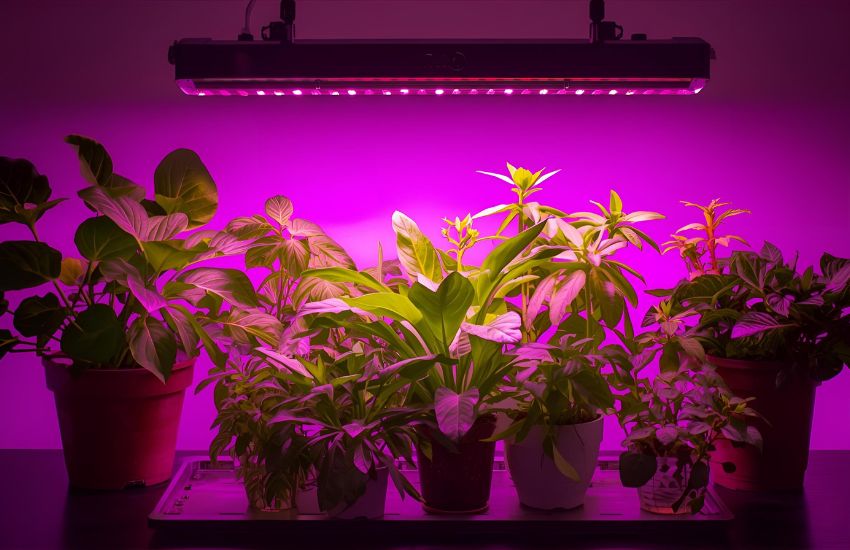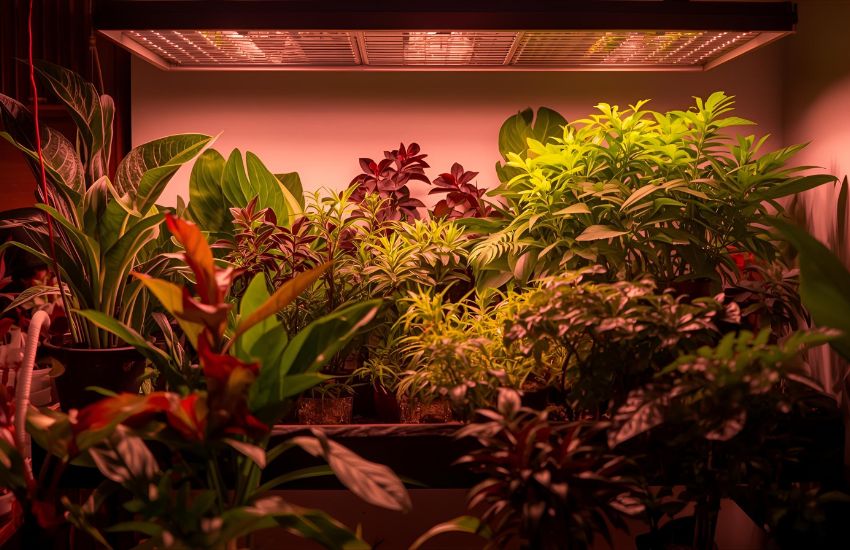When your indoor plants start to look tired, dull, or slow to grow, the issue often isn’t your watering schedule or soil it’s the lighting. Even when placed near a window, your houseplant might not be getting the consistent light source it truly needs. This is where a grow light can instantly transform your space and your results. Whether you’re caring for foliage, herbs, or even a flowering cactus, proper lighting can be the difference between survival and vibrant plant growth.
Grow lights instantly boost your indoor plants by providing consistent, full spectrum lighting that supports photosynthesis, even without natural sunlight. They mimic the sun’s essential wavelengths, helping plants grow faster, stay healthier, and thrive year-round especially in low-light conditions or during darker seasons.
Indoor environments, especially during winter or in low-light homes, often lack the natural sunlight that plants need for healthy photosynthesis. A full spectrum grow light, especially an energy-efficient LED grow light, provides the essential red light and blue light wavelengths your indoor plants need to thrive. Unlike a regular light bulb, a grow light delivers targeted support that mimics sunlight making it ideal for different plants with unique requirements.
In this post, you’ll discover how to choose the right lighting for your indoor plants, the benefits of switching to an LED light, the difference between fluorescent and LED grow options, and how to set up your system for maximum results no matter the types of plants you care for indoors.
Why the Right Lighting Is Important for Houseplant Growth

Light is one of the most critical factors in determining how well your houseplants grow and thrive. While water and soil play important roles, it’s the amount of light that drives photosynthesis the essential process through which plants produce the energy they need to stay healthy. In indoor settings, however, natural light is often limited, inconsistent, or simply unavailable in the areas where you want to place your greenery. That’s why choosing the right lighting is not just helpful it’s essential for successful houseplant growth.
When sunlight falls short, especially during the winter months or in spaces with minimal window access, supplemental light can make all the difference. The right light fixture delivers the necessary light intensity to mimic sunlight, allowing plants to continue developing strong roots, lush leaves, and even blossoms. In fact, many growers find that grow lights take your indoor plants to the next level almost immediately. With the correct spectrum and setup, these artificial solutions can help your plants thrive where they otherwise couldn’t.
A good understanding of indoor plant lighting 101 can help you match specific plants to their ideal light conditions, whether that’s indirect light or more concentrated exposure. Using targeted tools like grow bulbs or a dedicated plant light gives you more control over your environment, ensuring that lights take your indoor plants from surviving to thriving. If you want to elevate your plant care results, a thoughtful lighting plan is where plants to the next level truly begins.
How to Set Up Your Grow Light for Indoor Plants

To support strong and consistent growth, it’s essential to set up your grow light system thoughtfully. The goal is to provide your indoor houseplants with the right spectrum of light, duration, and positioning that closely matches what they would naturally receive outdoors. Since light is important for energy production and healthy development, understanding how to simulate the light of the sun indoors makes a major difference in results.
Choose the Right Type of Grow Light
Grow lights come in many forms, but the most effective options for indoor houseplants are fluorescent and LED varieties. A full-spectrum LED grow light is one of the most efficient choices, offering a balanced light spectrum that includes the light wavelengths plants use during photosynthesis. Whether you’re using a small grow light for a few herbs or a large grow light for multiple plants, it’s important to choose a system with light that mimics the light of natural sunlight. Avoid incandescent lights, as they produce too much heat and limited light useful to plants.
Understand the Spectrum and Light Intensity
Plants use different light wavelengths depending on their growth stage. Blue light helps with leaf development, while red supports flowering and fruiting. A plant grow light should provide a specific photosynthetic light range suitable for your house plant types. Some plants that prefer bright light, like succulents and fruiting plants, need a stronger intensity of light, while others such as the ZZ plant may thrive under low light or moderate light.
Determine Placement and Distance
It’s critical to place your light system correctly. Keep the fixture around 6–12 inches away from the plants, adjusting based on the intensity of light emitted and the plant species. Too much light can stress or burn leaves, while too little won’t provide enough light for healthy growth. Position the light in a suitable room in your home where it can run consistently and safely.
Manage Duration and Timing
Most indoor grow lights should be on for 12–16 hours of light per day, depending on the plant’s needs. Plants generally follow daylight rhythms, so using a timer to run your grow light daily helps create a consistent cycle. This ensures plants get the right balance of rest and stimulation, which is needed to grow properly. When you provide consistent exposure, your efforts help your plants develop into healthier, more vibrant specimens.
Match the Right Light to the Right Plant
Different plants respond to different types of light. For example, fluorescent lights work well for seedlings and leafy greens, while a full-spectrum LED grow system is ideal for a wide variety of indoor houseplants. Choose a light fixture with the correct LED bulb or tube output to meet your plant’s unique needs. Some types of grow setups even include adjustable heads for lighting many plants in one area.
Conclusion
Lighting is one of the most overlooked yet powerful tools in successful indoor gardening. Whether you’re growing herbs in your kitchen or tending to a full collection of indoor houseplants, the right light spectrum, duration, and positioning can dramatically impact how your plants grow. With the use of a full-spectrum LED grow light or a fluorescent and LED setup, you can effectively replicate the light of the sun indoors—ensuring that your plants get the specific photosynthetic light they need to grow.
By learning how to set up your grow light correctly, you give your plants the tailored care they deserve. From selecting the right types of grow lights to adjusting the intensity of light and duration, every detail matters. Remember, even low light environments can be transformed into lush, vibrant spaces with the right strategy. Whether you’re using a small grow light for a single house plant or a large grow light for multiple plants, your lighting system allows plants to flourish in ways that natural light alone cannot.
Now that you understand how grow lights take your indoor plants to the next level, it’s time to apply these insights. Explore your lighting options, adjust your setup, and watch as your indoor houseplants begin to truly thrive. Don’t wait upgrade your plant care routine today with a smart, efficient grow light system that helps your plants reach their full potential.
Frequently Asked Questions (How Grow Lights Take Your Indoor Plants to the Next Level Instantly)
How to properly use grow lights for indoor plants?
To use grow lights properly, place them 6–12 inches above plants, adjusting for brightness and heat. Provide 12–16 hours of light daily with an automatic timer for consistency. Choose full-spectrum LEDs for balanced growth, and ensure plants also get 6–8 hours of darkness each night.
How long should I leave grow lights on for indoor plants?
Most indoor plants need 12 to 16 hours of grow light daily to thrive, mimicking natural sunlight. Avoid leaving lights on 24/7, as plants also require 8 hours of darkness for rest and proper growth. Adjust timing based on plant type, season, and light intensity.
Why are my plants dying under grow light?
Plants may die under grow lights if they receive too much or too little light, improper spectrum, or heat stress from lights placed too close. Other factors like overwatering, poor soil, or lack of nutrients can also contribute. Balance light, water, and care for healthy growth.
What is the disadvantage of grow light?
The main disadvantage of grow lights is their energy consumption and cost, especially with long daily use. Some types can produce excess heat, risking plant stress or burns if placed too close. Additionally, improper light spectrum or duration may hinder growth, requiring careful monitoring and adjustment.
